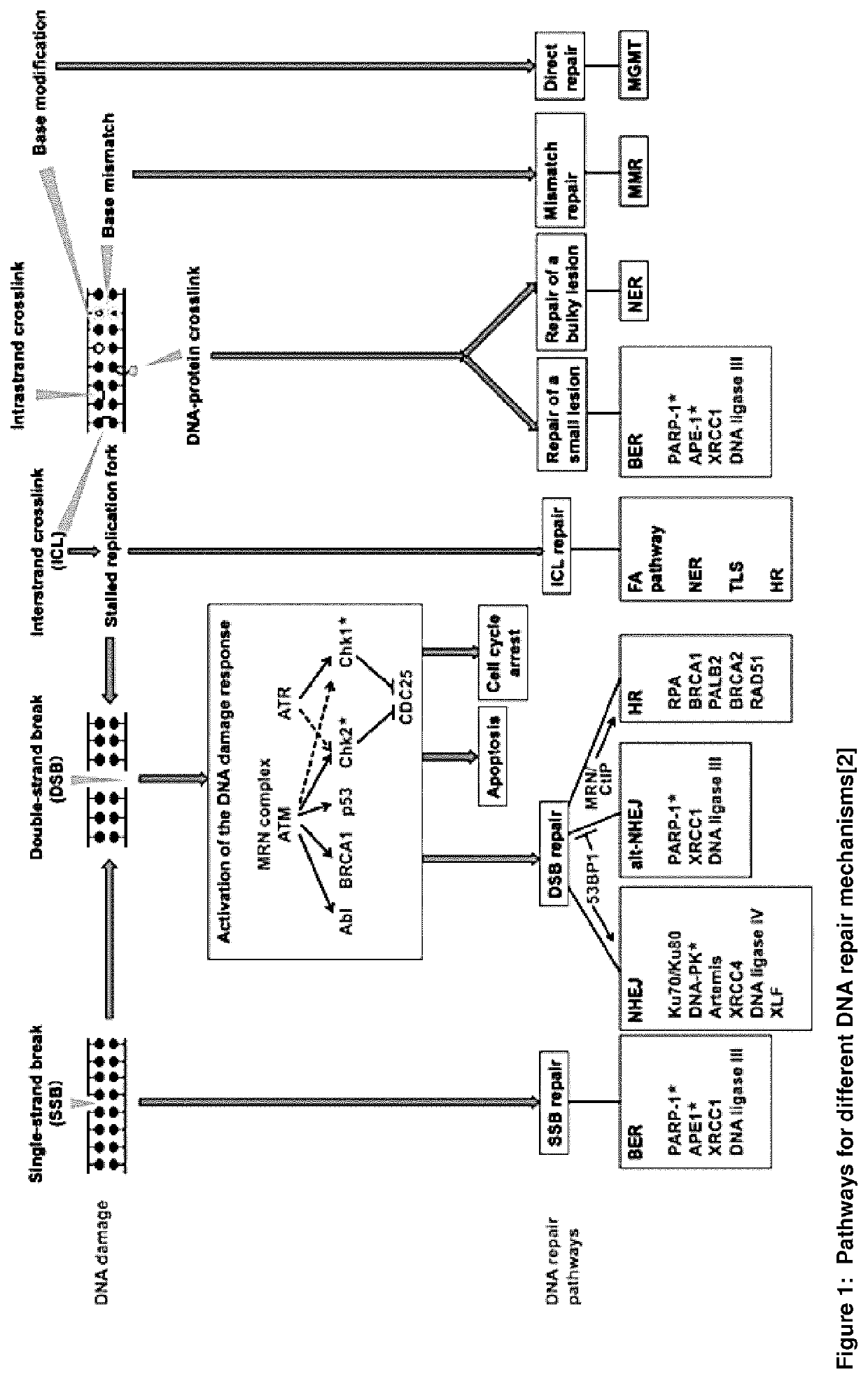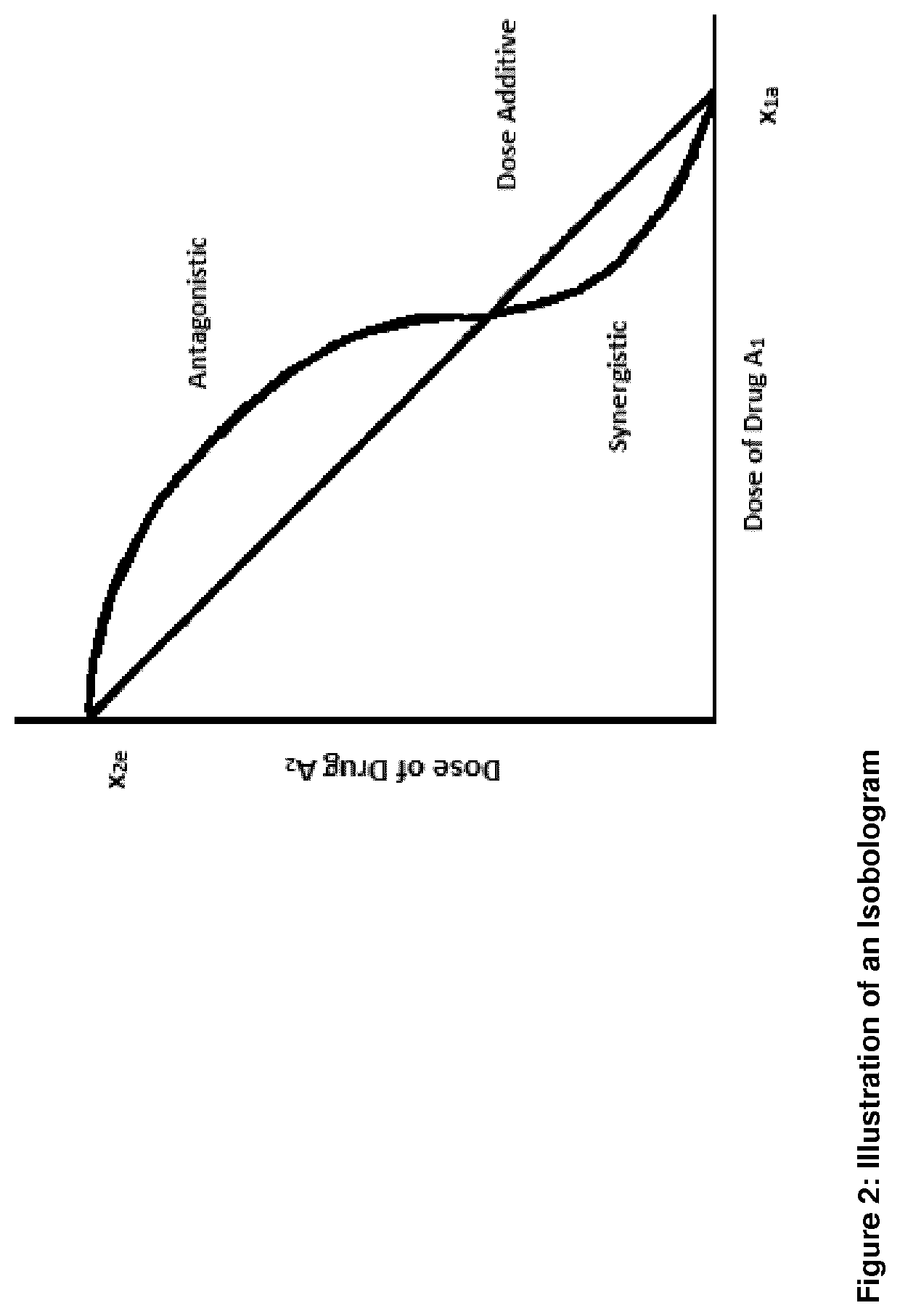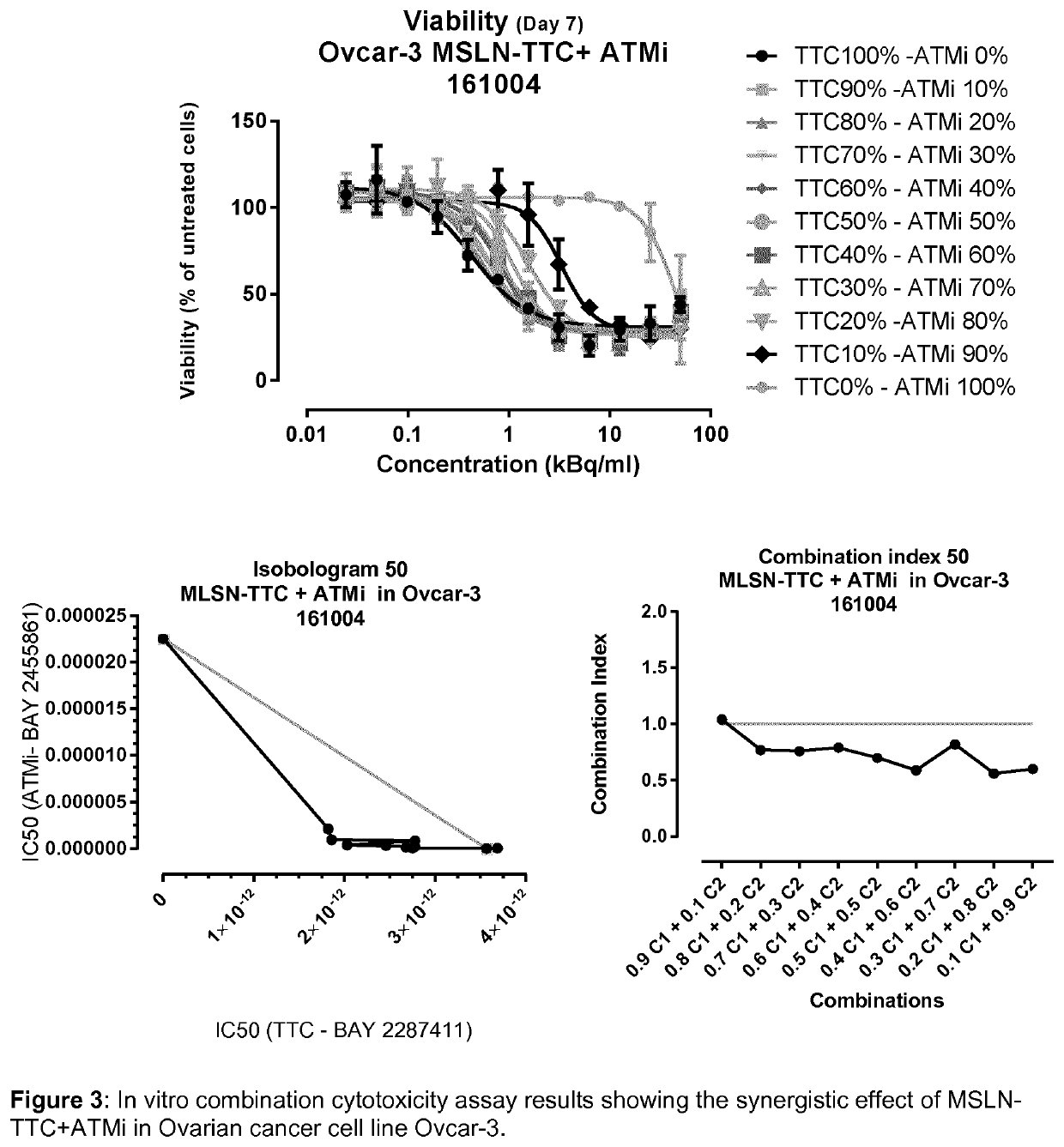Combination therapy comprising a radiopharmaceutical and a dna-repair inhibitor
a technology of radiopharmaceuticals and dna-repair inhibitors, which is applied in the direction of antineoplastic agents, organic active ingredients, drug compositions, etc., can solve the problem of limiting the amount of radionuclides which can be administered to a subject without causing intolerable side effects
- Summary
- Abstract
- Description
- Claims
- Application Information
AI Technical Summary
Benefits of technology
Problems solved by technology
Method used
Image
Examples
example 1 -
Example 1-Combination Cytotoxicity
[0139]Methods
[0140]The in vitro combination studies were performed with either of the two experimental methods explained:
[0141]I. Combination setup in 96 well plates:[0142]5-20 nM inhibitor was added to cells in 96 well plate[0143]Addition of TTC after 1 hour (titrated from 77 pM 227Th; 20 kBq / ml)[0144]Incubated for 5-7 days[0145]Viability determined by CellTiter-Glo (ATP); luminescence based assay[0146]The data is plotted as % viability based on untreated control[0147]A significant decrease in viability by the combination compared to the TTC monotreatment is defined as synergy
[0148]II. Combination setup in 384 well plates / Isobologram setup
[0149]The assay evaluates the effect of the combination treatment by determining the shift in IC50 from curves established from different combination fractions [1] (see table 1).[0150]TTC and inhibitor was added to the cells in 384 well plate[0151]Incubated for 5-7 days[0152]Viability determined by CellTiter-Glo (...
example 2 -
Example 2-Cellular Mechanistic Assays
[0164]Methods
[0165]Cellular Mechanistic Assays
[0166]p-Chk1 (FIG. 19) and y-H2AX (FIG. 21):[0167]Seeded cells in 6 well plates and incubated with TTC+ATRi (BAY1895344) for 3 days[0168]Detached cells and washed two times with PBS[0169]Cells were fixed and permeabilized cells using 70% ice cold ethanol and incubated 1 hour at 4° C.[0170]Washed with PBS+1% FBS (flow buffer) and transfer to 96 well plate[0171]The cells were spun down and supernatant removed[0172]The cells were resuspended in 100 μl anti-yH2AX-A647 antibody (1:50 in flow buffer) and anti-p-Chk1 antibody (1:100 in flow buffer) and incubated for 1 hour in the dark[0173]For cells stained with anti-p-Chk1 antibody: stained with secondary PE-antibody: 100 μl per well with Anti-rabbit IgG PE (1:100 in flow buffer) and incubated in dark for 1 hour at 4° C.[0174]Washed two times with flow buffer and removed the supernatant[0175]Resuspended the cells in 200 μl flow buffer and transferred to a u...
example 3 -
Example 3-In vivo, Efficacy Studies
[0191]The combination of TTC and ATRi (BAY1895344) was also evaluated in in vivo efficacy studies. Two different xenograft models were evaluated:[0192]Ovcar-3 xenograft in nude mice (FIG. 22)—MSLN-positive ovarian cancer cell line, treated with MSLN-TTC in combination with ATRi (BAY1895344)[0193]MFM-223 xenograft in nude mice (FIG. 23)—FGFR2-positive breast cancer cell line, treated with FGFR2-TTC in combination with ATRi (BAY1895344)
[0194]Methods
[0195]Ovcar-3 xenograft model (FIG. 22):[0196]At study day 0, animals received a subcutaneous inoculation of 5×106 humane ovarian Ovcar-3 cells / mouse on the right flank.[0197]Upon reaching a palpable tumor size (20-25 mm2), test item MSLN-TTC (BAY2287411) was injected into the tail vein of the animals at 100 kBq / kg with a protein dose of 0.14 mg / kg.[0198]After initial dosing of MSLN-TTC the ATRi (BAY 1895344) was dosed orally in a cycle of 20 mg / kg twice per day in a row of three days, followed by 4 days o...
PUM
| Property | Measurement | Unit |
|---|---|---|
| Time | aaaaa | aaaaa |
| Time | aaaaa | aaaaa |
| Dimensionless property | aaaaa | aaaaa |
Abstract
Description
Claims
Application Information
 Login to View More
Login to View More - R&D
- Intellectual Property
- Life Sciences
- Materials
- Tech Scout
- Unparalleled Data Quality
- Higher Quality Content
- 60% Fewer Hallucinations
Browse by: Latest US Patents, China's latest patents, Technical Efficacy Thesaurus, Application Domain, Technology Topic, Popular Technical Reports.
© 2025 PatSnap. All rights reserved.Legal|Privacy policy|Modern Slavery Act Transparency Statement|Sitemap|About US| Contact US: help@patsnap.com



